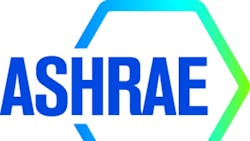ASHRAE Revises Standard for Comparing Building Energy Performance
According to Keith Emerson, chair of the Standard 105 committee, the new edition of Standard 105 includes procedures for calculating the impact of building energy use on primary (source) energy and greenhouse gases. Also, it provides common bases for:
- Reporting building energy use in terms of delivered energy forms and expressions of energy performance.
- Comparing design options.
- Comparing energy performance in terms of energy resources used and greenhouse-gas emissions created, both across buildings and for energy-efficiency measures within buildings.
“To keep the standard flexible, a number of decisions are left to those who adopt it, including what should be calculated beyond site energy and the multipliers for those additional calculations,” Emerson said.
Primary energy and greenhouse-gas equivalence conversion factors, which are available from a number of sources, including an informative appendix in the standard, have been left to the discretion of adopting agencies and authorities. Also, the standard now contains code-enforceable language.
The cost of Standard 105-2014 is $48 for ASHRAE members and $58 for non-members. Copies can be ordered by phone at 1-800-527-4723 (United States and Canada) or 404-636-8400, by fax at 678-539-2129, or online at www.ashrae.org/bookstore.
About the Author
Scott Arnold
Executive Editor
Described by a colleague as "a cyborg ... requir(ing) virtually no sleep, no time off, and bland nourishment that can be consumed while at his desk" who was sent "back from the future not to terminate anyone, but with the prime directive 'to edit dry technical copy' in order to save the world at a later date," Scott Arnold joined the editorial staff of HPAC Engineering in 1999. Prior to that, he worked as an editor for daily newspapers and a specialty-publications company. He has a bachelor's degree in journalism from Kent State University.

